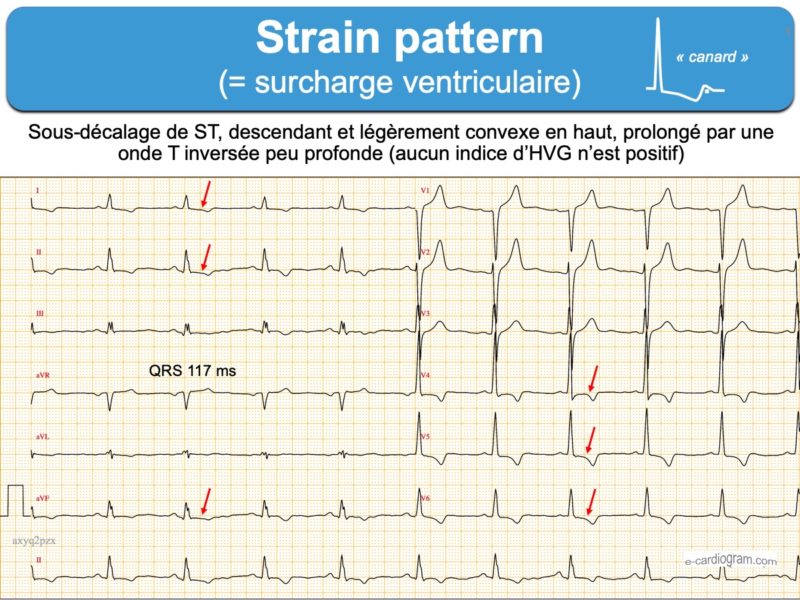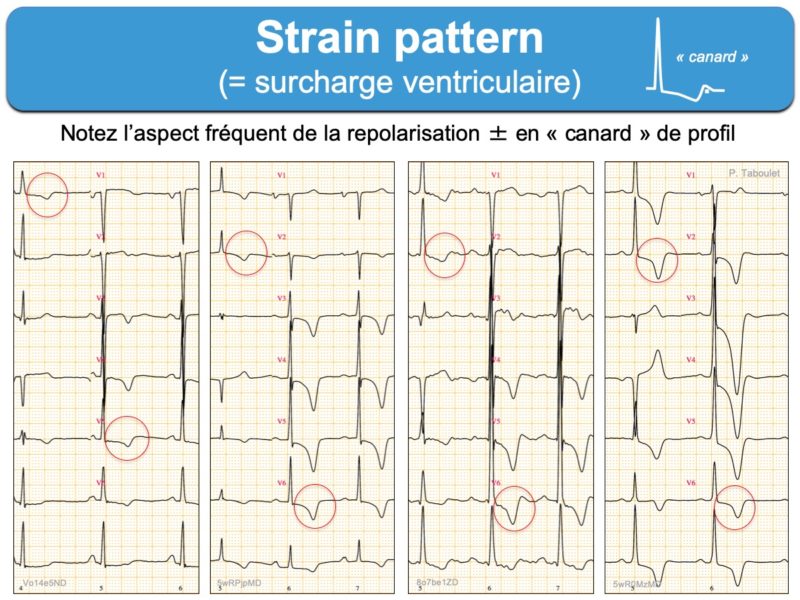Terme anglais (strain : « contrainte ») qui correspond à un aspect type (pattern) de la repolarisation ventriculaire évocateur d’une hypertrophie ventriculaire gauche ou droite [1].
Terme français : surcharge ventriculaire
Voir Surcharge ventriculaire gauche ou Surcharge ventriculaire droite


